
Case #306 - August, 2011
A 41-year-old woman from the Amazon region of Brazil presented at a local hospital with fever, chills, and myalgia. The health care provider ordered thick and thin blood smears to be made for routine parasitological examination. The blood smears were stained with Giemsa and examined using 1000x oil immersion. Figures A-C show what was observed on the thick smear; Figures D-I show what was observed on the thin smear. What is your diagnosis? Based on what criteria?
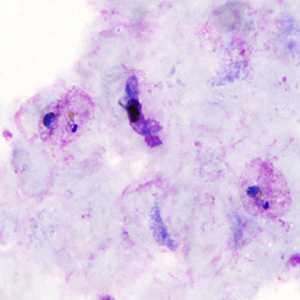
Figure A
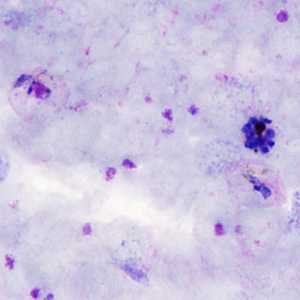
Figure B
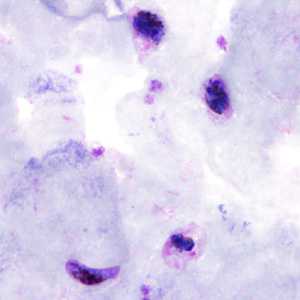
Figure C
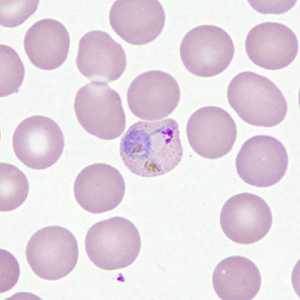
Figure D
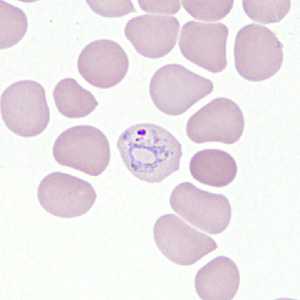
Figure E
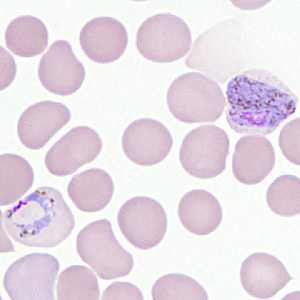
Figure F
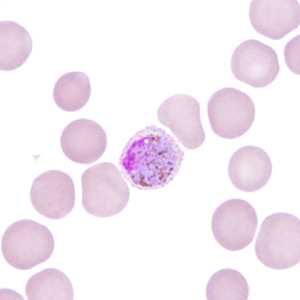
Figure G
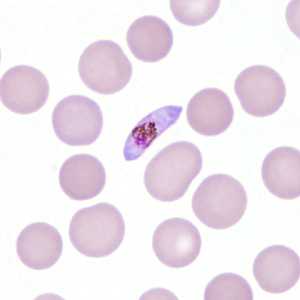
Figure H
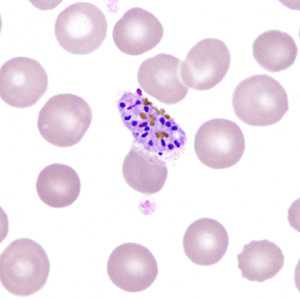
Figure I
Case Answer
This case demonstrated a mixed infection of malaria caused by two species of Plasmodium, P. falciparum and P. vivax. Morphologic diagnostic features shown included:
- crescent-shaped gametocytes consistent with P. falciparum (Figures A, C, and H).
- large, amoeboid trophozoites in enlarged red blood cells consistent with P. vivax (Figures D, E, and F)
- infected red blood cells with Schϋffner's stippling consistent with P. vivax (Figures D, F, and G).
- large gametocytes of P. vivax in enlarged red blood cells (Figures F and G).
- a mature schizont with about 15 merozoites in an enlarged red blood cell with Schüffner's stippling (visible on the lower side), consistent with P. vivax (Figure I).
Although not commonly seen, cases of malaria caused by more than one species of Plasmodium do occur. When there is morphologic evidence for more than one species of Plasmodium present, PCR may be performed for confirmation.
More on: Malaria
Images presented in the monthly case studies are from specimens submitted for diagnosis or archiving. On rare occasions, clinical histories given may be partly fictitious.
DPDx is an education resource designed for health professionals and laboratory scientists. For an overview including prevention and control visit www.cdc.gov/parasites/.
- Page last reviewed: August 24, 2016
- Page last updated: August 24, 2016
- Content source:
- Global Health – Division of Parasitic Diseases and Malaria
- Notice: Linking to a non-federal site does not constitute an endorsement by HHS, CDC or any of its employees of the sponsors or the information and products presented on the site.
- Maintained By:


 ShareCompartir
ShareCompartir